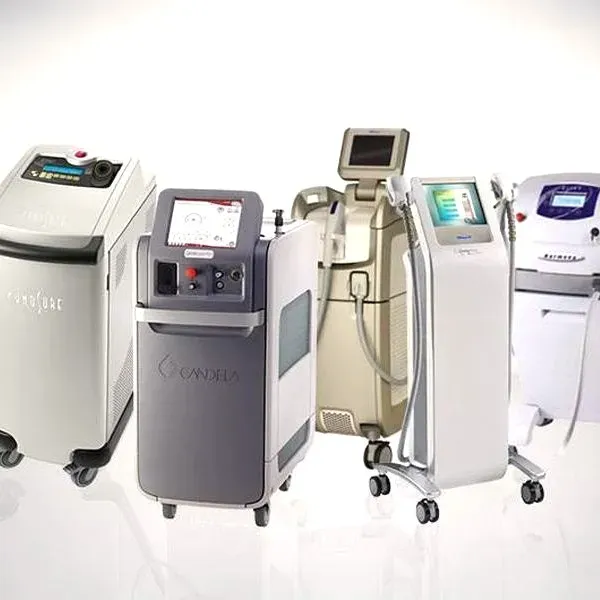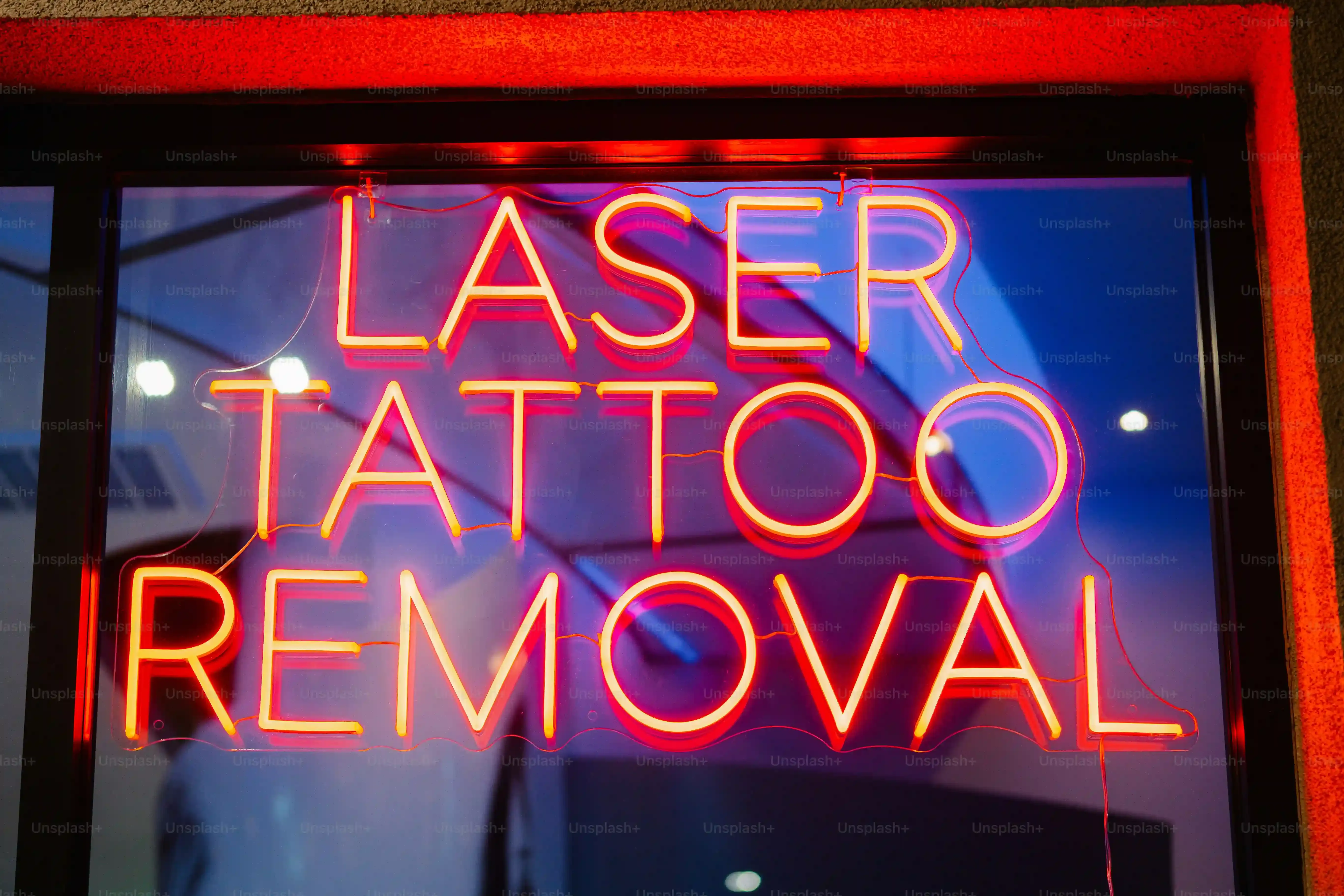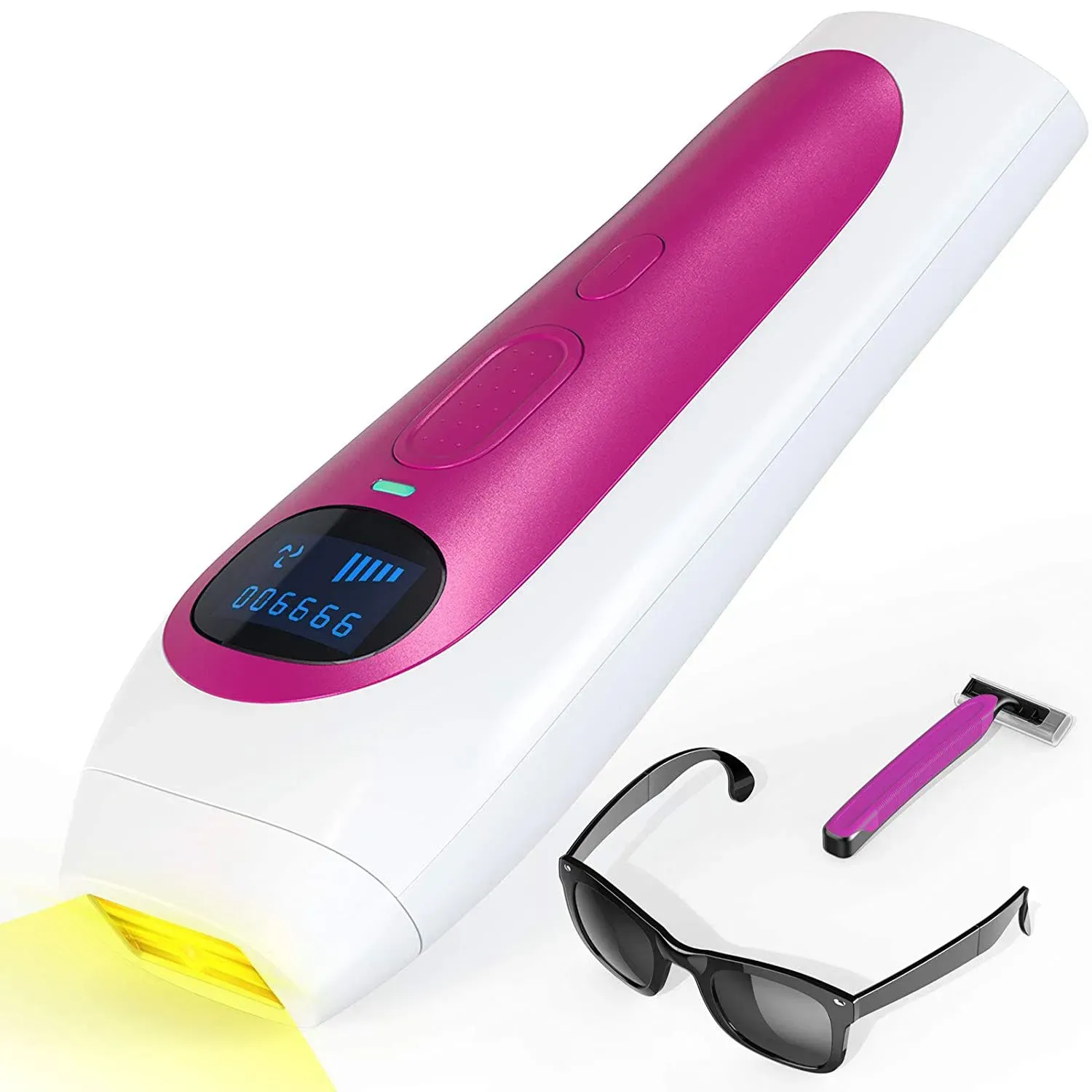Table of Contents
Tired of the endless cycle of shaving, waxing, and plucking? You're not alone. The quest for smooth, stubble-free skin can feel like a full-time job, often leaving behind razor burn, ingrown hairs, and general frustration. Maybe you’ve eyed those laser treatments, wondering if they’re the real deal, or perhaps you've already started looking into devices you can use at home. But with so many options out there, how do you figure out the absolutebest laser for hair removalfor your specific needs? It feels like navigating a jungle of wavelengths, pulses, and promises.
Understanding the Best Laser for Hair Removal: Types and Technology

Understanding the Best Laser for Hair Removal: Types and Technology
Not All Light Shows Are Equal: Diode, Alexandrite, and Nd:YAG
let's get down to the nitty-gritty of how this stuff actually works. When people talk about thebest laser for hair removal, they're usually referring to devices that shoot a concentrated beam of light at your hair follicles. The pigment in your hair, called melanin, absorbs this light. That absorption turns the light energy into heat, which then damages the follicle, ideally preventing future hair growth. Simple enough, right? Except there isn't just one type of laser doing the job.
You'll hear about a few main players: Diode, Alexandrite, and Nd:YAG. Each operates at a different wavelength, meaning they target the melanin slightly differently. Think of it like tuning a radio – different stations come in clearer depending on the frequency. The wavelength matters because it affects how the laser interacts with both the hair pigment and the pigment in your skin. Getting this wrong can lead to ineffective treatment or, worse, burns and discoloration. It's why that consultation before treatment isn't just for show.
Matching Wavelengths to Skin Tones: Why It Matters
Choosing the right laser type is absolutely critical, and it largely depends on your skin tone and hair color. The Alexandrite laser, for instance, operates at a shorter wavelength (around 755 nm). It's highly effective for lighter skin tones (Fitzpatrick Types I-III) with dark hair because its energy is strongly absorbed by melanin. This strength is also its limitation; using it on darker skin can cause the laser to target the skin's pigment instead of just the hair, leading to complications.
Diode lasers sit in the middle (around 800-810 nm). They offer a good balance, working well for a broader range of skin types, typically Fitzpatrick Types I-IV. They penetrate deeper than Alexandrite lasers, which can be beneficial for certain hair types. Nd:YAG lasers have the longest wavelength (1064 nm). This makes them safer for darker skin tones (Fitzpatrick Types IV-VI) because the light bypasses the epidermal melanin more effectively, targeting the deeper hair follicle. It's often the go-to for those with rich, dark complexions who want effective and safe treatment. Picking the wrong one is like bringing a knife to a gunfight, or maybe more accurately, bringing the wrong frequency jammer.
- Alexandrite (755 nm): Best for lighter skin (Types I-III), dark hair. High melanin absorption.
- Diode (800-810 nm): Versatile, good for light to medium-dark skin (Types I-IV). Deeper penetration.
- Nd:YAG (1064 nm): Safest for darker skin (Types IV-VI). Bypasses surface melanin effectively.
IPL: Not Quite a Laser, But Still in the Game
You'll also encounter Intense Pulsed Light (IPL) devices, especially in the at-home market. It's important to understand that IPL is *not* a laser. While it also uses light energy to target hair follicles, it emits a broad spectrum of wavelengths (like a light bulb) rather than a single, focused beam (like a laser pointer). Filters are used to narrow down the wavelength range, but it's still less precise than a true laser.
This difference in technology means IPL is generally less powerful and less effective than professional laser treatments, especially for stubborn hair. However, for some individuals with the right skin tone and hair color combination (typically lighter skin and darker hair), IPL can still offer noticeable hair reduction over time. It's often more affordable than professional laser treatments, making it an accessible entry point, but managing expectations about the speed and completeness of results is key. Think of IPL as a dimmer switch compared to a laser's spotlight.
Matching Your Skin and Hair: Finding the Best Laser for Hair Removal for You

Matching Your Skin and Hair: Finding the Best Laser for Hair Removal for You
Understanding the Fitzpatrick Scale: Why Skin Tone is Key
so we touched on how different lasers use different wavelengths to target melanin. Now, let's talk about why your skin tone is just as crucial as your hair color in this whole equation. Professionals use something called the Fitzpatrick scale. It's basically a way to classify how your skin reacts to sun exposure, ranging from Type I (very pale, always burns, never tans) to Type VI (very dark, never burns, deeply tans).
Why does this matter for finding thebest laser for hair removal? Because your skin also has melanin. If a laser is too aggressive or the wrong type for your skin tone, it can mistake the pigment in your skin for hair pigment. That’s how you end up with potential burns, blisters, or discoloration. It’s not a fun outcome, and frankly, entirely avoidable with the right approach. Getting this assessment right is step one in not regretting your decision.
Hair Color and Texture: The Other Half of the Equation
Beyond skin tone, your hair itself is a major factor. Remember how the laser targets melanin? This is where hair color becomes critical. Darker hair, like black or dark brown, contains the most melanin. This makes it an excellent target for the laser energy.
On the flip side, lighter hair colors – think blonde, red, grey, or white – have significantly less melanin. Some have virtually none. Without enough pigment for the laser to absorb, the treatment simply won't be effective. The light passes right through without generating enough heat to damage the follicle. Hair texture matters too; thicker, coarser hairs tend to respond better than fine, vellus hairs because they usually contain more pigment and are more substantial targets.
Hair Color | Melanin Level | Laser Effectiveness |
|---|---|---|
Black/Dark Brown | High | Excellent |
Medium Brown | Moderate | Good |
Light Brown | Low-Moderate | Fair to Poor |
Blonde, Red, Grey, White | Very Low to None | Poor to Ineffective |
Consultation is Non-Negotiable: Getting Expert Advice
Given how much skin tone and hair color influence the outcome, trying to guess thebest laser for hair removalon your own is frankly, a terrible idea. This is where a professional consultation becomes absolutely non-negotiable. A qualified technician or dermatologist will assess your specific skin type using the Fitzpatrick scale and examine your hair characteristics.
They'll consider any medical history that might affect treatment, like medications or skin conditions. Based on this evaluation, they can recommend the most appropriate laser technology (Alexandrite, Diode, Nd:YAG) and the correct settings for your unique profile. Walking into a clinic or buying an at-home device without this understanding is like buying shoes blindfolded and hoping they fit. Don't skip this step; it's the foundation for safe and effective hair reduction. You can find experts who prioritize this at places like hairawaybylaser.com.
So, are you absolutely sure you know your Fitzpatrick type and if your hair has enough pigment? Or maybe leaving the assessment to someone who does this for a living makes more sense?
Clinic vs. Couch: Weighing InOffice and AtHome Best Laser Hair Removal Options

Clinic vs. Couch: Weighing InOffice and AtHome Best Laser Hair Removal Options
The Big Decision: Where to Get Zapped?
so you've got a handle on the tech and why your personal specs (skin, hair) matter for finding thebest laser for hair removal. Now comes the fork in the road: do you head to a professional clinic, or do you try to tackle this yourself with an at-home device? This isn't just about convenience or cost; it's about power, effectiveness, and let's be honest, who's actually holding the zapper. Clinic lasers are generally way more powerful than anything you can legally buy for home use. They're operated by trained professionals who know exactly which wavelength to use and how much juice to apply without frying your skin. This usually means faster, more dramatic results, but it also comes with a higher price tag and scheduled appointments that you actually have to show up for.
- Clinic Lasers: Higher power, professional assessment, faster results, higher cost.
- At-Home Devices: Lower power, self-application, slower/less dramatic results, lower upfront cost, convenience.
Getting Real: Safety, Expectations, and Results with the Best Laser for Hair Removal

Getting Real: Safety, Expectations, and Results with the Best Laser for Hair Removal
Setting the Record Straight on Safety and Side Effects
Alright, let's talk about the elephant in the room: is this wholebest laser for hair removalthing actually safe? For the most part, yes, when done correctly. But 'correctly' is the operative word. Improper use, whether by an inexperienced technician or a DIY enthusiast with the wrong device, can lead to issues. We're talking temporary redness and swelling, which is pretty common and usually fades within a few hours. More serious stuff can include blistering, burns, changes in skin pigment (lighter or darker spots), and even scarring. It's not a walk in the park if things go south.
That's why the consultation we talked about earlier is crucial. A professional assesses your risk factors. Using an at-home device requires you to *be* the professional – reading the manual, doing patch tests, and understanding your own skin's reaction. Ignoring these steps is just asking for trouble. Think of it as following the instructions on a box of hair dye; skipping steps rarely ends well.
- Common Side Effects: Redness, swelling (usually temporary).
- Potential Serious Side Effects: Blistering, burns, pigment changes (hypo- or hyperpigmentation), scarring.
- Minimize Risk: Professional consultation, patch testing, following instructions precisely.
Managing Expectations: How Many Sessions and What Results?
Here's another dose of reality: laser hair removal isn't a one-and-done deal. Anyone promising you permanent hair removal after a single session is selling you snake oil. Hair grows in cycles, and the laser is most effective on hairs in the active growth phase. Not all hairs are in this phase at the same time.
You'll need a series of treatments, typically spaced several weeks apart, to target the majority of follicles as they cycle through. The exact number varies depending on the area being treated, your hair and skin type, the device or laser used, and individual response. Most people require anywhere from 4 to 8 sessions, sometimes more. And while you'll see significant reduction, it's often *permanent reduction*, not necessarily *permanent elimination*. You might need occasional touch-up sessions down the line. Expecting baby-smooth skin forever after two appointments is setting yourself up for disappointment.
What Success Looks Like: Realistic Outcomes
So, what kind of results can you realistically expect from thebest laser for hair removalfor you? After completing a full course of treatments, most people see a dramatic reduction in hair growth. The hairs that do grow back are usually finer, lighter, and sparser. Shaving frequency decreases significantly, often becoming a rare chore rather than a daily or weekly necessity. Many find they no longer have issues with ingrown hairs or razor burn in treated areas.
Success isn't about achieving skin as smooth as a billiard ball with zero hair ever again. It's about achieving a level of hair reduction that makes your life easier and your skin clearer. For some, this means never needing to shave their underarms again. For others, it might mean needing to shave their legs once a month instead of daily. Define what success looks like for *you* before you start, and have an honest conversation with your provider (or yourself, if using an at-home device) about whether that outcome is achievable.
Making the Call: Your Path to Finding the Best Laser for Hair Removal
Navigating the world of laser hair removal, whether in a clinic or at home, requires a bit of homework. There isn't a single "best laser for hair removal" for everyone; the right choice depends heavily on your individual characteristics like skin type and hair color, and your willingness to commit to the process. Results aren't instant, and managing expectations is key. While professional treatments often offer more power and versatility, modern at-home devices can be a viable, cost-effective option for many, provided you select the right technology and use it correctly. Ultimately, armed with the right information and a realistic outlook, you can make an informed decision and potentially say goodbye to temporary hair removal methods for good. Just remember, consistency and patience are your allies on this journey.
